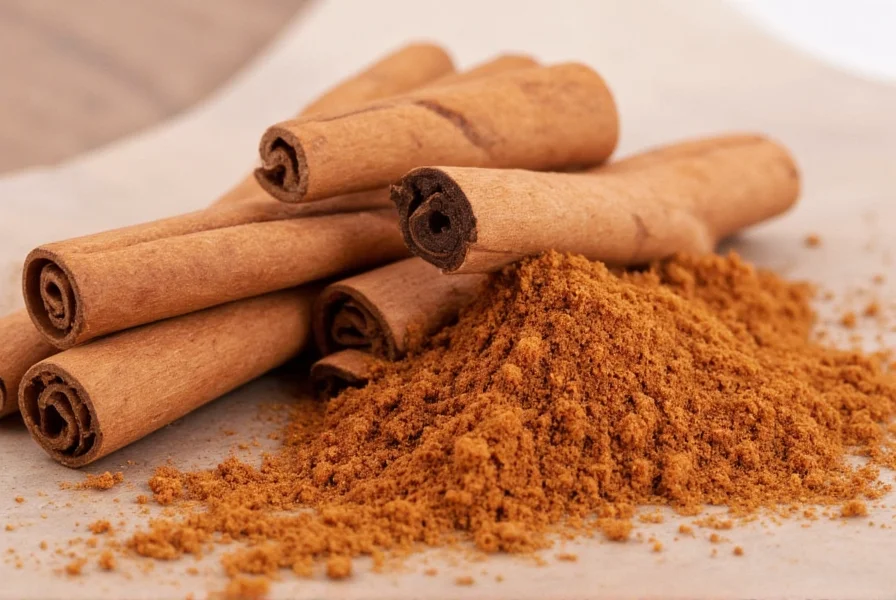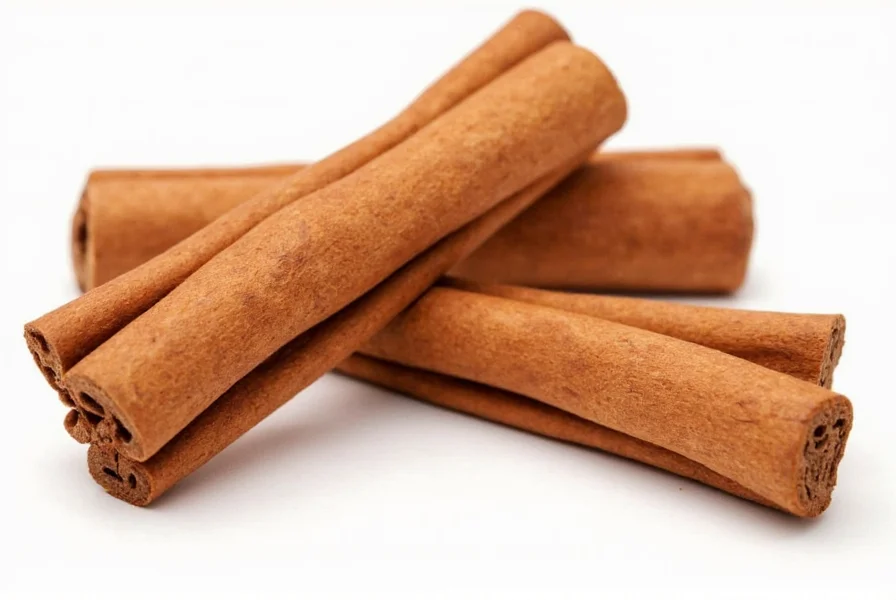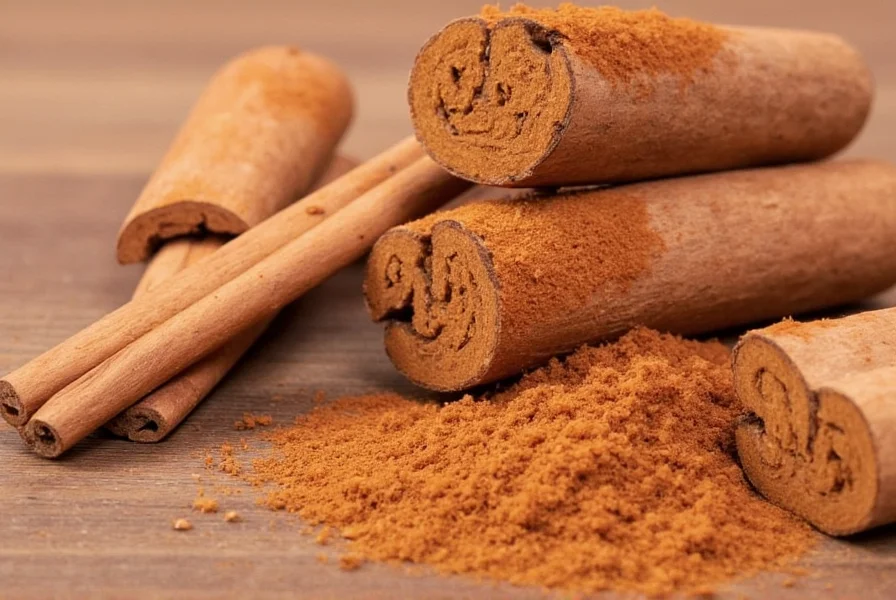Saigon cinnamon, scientifically known as Cinnamomum loureiroi or sometimes classified as a variety of Cinnamomum cassia, has gained popularity for its intense flavor and potential health advantages. This distinctive variety, primarily cultivated in Vietnam, contains higher concentrations of beneficial compounds than common cassia cinnamon, but also carries important considerations for regular consumption.
What Makes Saigon Cinnamon Unique
Saigon cinnamon stands out for its exceptional aroma and robust flavor profile, containing approximately 1-5% essential oil with 25% cinnamaldehyde—the compound responsible for cinnamon's characteristic taste and many health benefits. Compared to other cinnamon varieties, Saigon cinnamon typically contains:
| Cinnamon Type | Cinnamaldehyde Content | Coumarin Content (per kg) | Origin |
|---|---|---|---|
| Saigon Cinnamon | 24.6-29.5% | 2,800-11,200 mg | Vietnam |
| Chinese Cassia | 70-90% | 2,500-8,000 mg | China |
| Ceylon Cinnamon | 50-73% | 48-127 mg | Sri Lanka |
This table illustrates why Saigon cinnamon delivers potent flavor but also contains substantially higher coumarin levels than Ceylon cinnamon—the variety considered safer for regular consumption.

Documented Health Benefits of Saigon Cinnamon
Research indicates several potential health advantages associated with Saigon cinnamon consumption:
Powerful Antioxidant Properties
Saigon cinnamon ranks among the highest natural sources of polyphenol antioxidants. A 2018 study published in Oxidative Medicine and Cellular Longevity found that cinnamon extracts demonstrated significant free radical scavenging activity, potentially reducing oxidative stress linked to chronic diseases. The ORAC (Oxygen Radical Absorbance Capacity) value for Saigon cinnamon measures approximately 267,536 μmol TE/100g, substantially higher than many common spices.
Blood Sugar Regulation Support
Multiple clinical studies suggest cinnamon may improve insulin sensitivity. A comprehensive 2013 meta-analysis in the Journal of Medicinal Food reviewed 10 trials involving 543 participants and concluded that cinnamon supplementation significantly reduced fasting blood glucose levels. The mechanism appears to involve cinnamon's ability to mimic insulin and enhance glucose uptake by cells.
Anti-Inflammatory Effects
The cinnamaldehyde and other compounds in Saigon cinnamon demonstrate notable anti-inflammatory properties. Research in BioFactors (2020) indicated that cinnamon extracts inhibited inflammatory markers like TNF-α and IL-6 in cell studies, suggesting potential benefits for conditions involving chronic inflammation.
Important Safety Considerations and Risks
While Saigon cinnamon offers benefits, its high coumarin content necessitates careful consumption:
Coumarin Content and Liver Health
Coumarin, a naturally occurring compound in Saigon cinnamon, can cause liver toxicity at high doses. The European Food Safety Authority (EFSA) established a tolerable daily intake (TDI) of 0.1 mg coumarin per kilogram of body weight. For a 70 kg (154 lb) adult, this translates to approximately 7 mg of coumarin daily.
Given that Saigon cinnamon contains 2,800-11,200 mg of coumarin per kilogram, just one teaspoon (approximately 2.6 grams) could contain 7.3-29.1 mg of coumarin—exceeding the recommended daily limit. Regular consumption of larger amounts may potentially lead to liver damage, particularly in sensitive individuals.
Who Should Exercise Caution
Certain populations should be particularly careful with Saigon cinnamon:
- Individuals with pre-existing liver conditions
- People taking medications metabolized by the liver
- Pregnant and breastfeeding women
- Children
Saigon Cinnamon vs. Ceylon Cinnamon: Making the Right Choice
When considering regular consumption for health benefits, understanding the differences between cinnamon varieties proves crucial:
- Saigon cinnamon: Best for occasional culinary use where its intense flavor shines, but not ideal for daily therapeutic consumption due to high coumarin levels
- Ceylon cinnamon: Contains only trace amounts of coumarin, making it safer for regular consumption while still providing health benefits
For those seeking cinnamon's potential health benefits without coumarin concerns, Ceylon cinnamon represents the superior choice for daily use. However, Saigon cinnamon remains perfectly safe when used sparingly as a flavoring agent in cooking and baking.

Practical Recommendations for Safe Consumption
To enjoy Saigon cinnamon's benefits while minimizing potential risks:
- Limited to 1/2 teaspoon (approximately 1.3 grams) maximum per day
- Avoid using as a daily supplement
- Rotate with Ceylon cinnamon for regular consumption
- Consult with a healthcare provider before using therapeutically, especially if taking medications
- Choose water-extracted cinnamon products when possible, as coumarin is less soluble in water than in alcohol or fat
Conclusion: Balancing Benefits and Safety
Saigon cinnamon delivers impressive flavor and potential health benefits, but its high coumarin content requires mindful consumption. For occasional culinary use, it remains a safe and beneficial spice. However, those considering regular consumption for health purposes would benefit from choosing Ceylon cinnamon instead. As with any natural product, moderation proves key—enjoy Saigon cinnamon's distinctive taste in appropriate amounts while respecting its biochemical properties.
Frequently Asked Questions
How much Saigon cinnamon is safe to consume daily?
For most adults, limiting Saigon cinnamon to 1/2 teaspoon (approximately 1.3 grams) per day keeps coumarin intake within safe limits. This amount typically contains 3.6-14.6 mg of coumarin, which approaches but generally stays below the 7 mg daily limit for a 70 kg adult. Those with liver concerns should consume even less or choose Ceylon cinnamon instead.
Can Saigon cinnamon lower blood sugar effectively?
Research suggests Saigon cinnamon may help improve insulin sensitivity and lower fasting blood glucose levels. Multiple studies, including a 2013 meta-analysis in the Journal of Medicinal Food, found significant reductions in blood sugar among participants taking cinnamon supplements. However, it should never replace prescribed diabetes medication, and those with diabetes should consult their healthcare provider before using cinnamon therapeutically.
What are the signs of consuming too much Saigon cinnamon?
Excessive Saigon cinnamon consumption may cause symptoms related to coumarin toxicity, including nausea, abdominal pain, diarrhea, and in severe cases, liver damage symptoms like jaundice (yellowing of skin or eyes), dark urine, and unusual fatigue. These effects typically occur only with prolonged consumption of large amounts (several teaspoons daily over weeks or months), not from normal culinary use.
Is Saigon cinnamon safe during pregnancy?
While culinary amounts of Saigon cinnamon in food are generally considered safe during pregnancy, therapeutic doses or regular high consumption should be avoided. The high coumarin content raises concerns, and limited research exists on cinnamon's effects during pregnancy. Most healthcare providers recommend sticking to Ceylon cinnamon for any regular consumption during pregnancy and consulting with a healthcare provider before using cinnamon supplements.
How can I tell if I'm buying authentic Saigon cinnamon?
Authentic Saigon cinnamon typically comes from Vietnam and has distinctive characteristics: thick, hard bark that's difficult to grind, a strong sweet-spicy aroma, and a reddish-brown color. It often sells for a premium price compared to regular cassia cinnamon. Look for packaging that specifies "Cinnamomum loureiroi" or "Saigon cinnamon" from Vietnam. Be cautious of extremely cheap "Saigon cinnamon" as it may be mislabeled regular cassia.











 浙公网安备
33010002000092号
浙公网安备
33010002000092号 浙B2-20120091-4
浙B2-20120091-4